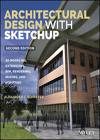Design Vanguard 2016: Magén Architects
Materials, construction practice, and place inform the dynamic, sculptural buildings of two Spanish brothers.

Magén Architects
Photo © Pedro Pegenaute

Bajo Martin County Council
The facade of translucent alabaster, a local material, relates the project to its place in the absence of strong contextual cues from its roadside location. The sculptural massing is inspired by the excavated geometry of the alabaster quarries. The second-floor council chamber cantilevers over the recessed entry.
Photo © Pedro Pegenaute

DG House
A series of shallow additions around the shell of an unfinished house mediate between indoors and out, creating an irregular assemblage brought together by a multifaceted zinc roof. Two wings frame the patio of the U-shaped scheme, with the living areas on the left and the master bedroom to the right.
Photo © Pedro Pegenaute

Ebro Environmental Center
The architects conceived the pavilion as a landscape form, with sloping volumes that rise from the banks of this riverside park in Zaragoza. Wood finishes inside and out blend in with the trees. Ramps with frameless glass balustrades ascend to a rooftop viewing platform and an outdoor amphitheater.
Photo © Pedro Pegenaute

Valdespartera School
Set between blocks of new subsidized housing and a highway, the primary school focuses inward around an oval patio. The continuous roof flares up at each end to accommodate the cafeteria and multipurpose hall. A screen of colored metal tubes, “like colored pencils,” according to the architects, enclose the perimeter.
Photo © Pedro Pegenaute

Escatrón Town Hall
In a two-stage construction process, the council chamber on the right was built first, followed by the office block on the left, where the corner entry and upper balcony are chiseled out of the stone-clad volume. The building offers a dynamic, asymmetrical face to the town’s church and main plaza.
Photo © Pedro Pegenaute






Architects & Firms
Zaragoza, Spain
A good point of entry for understanding the complex designs of the brothers Jaime and Francisco J. Magén Pardo are the sculptures of the late Spanish artist Eduardo Chillida, with their play of dense solids and equally compacted voids. Take Magén Architects’ Bajo Martin County Council building, for example, which was inspired by the alabaster quarries of the area west of Barcelona, with their haphazard geometric cuttings, as well as Chillida’s own alabaster sculptures. The building is clad in alabaster and limestone, and is similarly eroded, as if cut from a solid block, with cantilevers and odd outcroppings. Inside, the main stair connects a sequence of double-height spaces on staggered floors, also finished in stone so that they read as excavations.
Another key to the duo’s work is the relationship between their sculptural buildings and visitors’ paths through them. In the Ebro Environmental Center in Zaragoza, the pitched roofs of the wood-and-glass pavilion create an accessible platform overlooking the Ebro River. The roofs are also the culmination of a series of switchback ramps that, together with a stepped amphitheater, are integral to the building.
Variations on these strategies appear in other projects. The corner entry of the architects’ town hall for Escatrón, a compressed space chiseled out of the building mass, leads into another chain of overlapping double-height spaces. For the DG House, the Magéns surrounded the shell of an unfinished structure with porches, window nooks, and other protrusions, transforming it into an irregular, faceted assemblage. The idea, Jaime explains, was to add “the intermediate spaces between indoors and out” that the original design lacked.
In larger projects, the architects counter this taste for formal fragmentation with unifying themes, such as the oval central patio of the Valdespartera Primary School outside Zaragoza, where the ring of the roof covers both classrooms and a long entry ramp. In their competition-winning project for the Arcosur Primary School the roofs of single-story elements are broken up with diagonal sawtooths for clerestory lighting, creating a village-like cluster of volumes.
Jaime, age 42, and Francisco, 37, studied at the University of Navarra in Pamplona, where Francisco Mangado was an influential teacher. From Mangado they learned that “architecture has to do with place, material, and construction,” Jaime recalls. “It’s a physical act.” Though they founded their studio just before Spain’s economic crisis, their base in the provinces has supplied more opportunities than they’d find in competitive areas like Madrid and Barcelona. But citing Rafael Moneo, Jaime maintains that a vital practice must be based on “the three legs” of teaching, research, and building. The brothers now give classes at the new school of architecture in Zargoza and are working on their doctoral theses.
Magén Architects
FOUNDED: 2006
DESIGN STAFF: 5
PRINCIPALS: Jaime Magén Pardo and Francisco J. Magén Pardo
EDUCATION: Jaime Magén Pardo: University of Navarra School of Architecture (ETSA), masters in Theory and History of Architecture, 2014; M.Arch., 1999. Francisco J. Magén Pardo: University of Navarra School of Architecture, postgraduate studies in Planning and Urban Development, 2005; M.Arch., 2004
WORK HISTORY: Jaime Magén Pardo: CM Architects, 2003–05; Basilio Tobías Architect, 2000–02; Francisco J. Magén Pardo: CM Architects, 2004–05
KEY COMPLETED PROJECTS: DG House, 2015; Escatrón Town Hall, 2014; Valdespartera Primary School, 2013; Bajo Martin County Council, 2012; Casa Julve Cultural Center, 2011; Tauste Social Housing, 2010; Ebro Environment Center, 2009; Zaragoza Social Housing, 2006 (all in Spain)
KEY CURRENT PROJECTS: Arcosur Primary School, 2018; Illueca Auditorium, 2018; Club House, El Olivar Sports Center, 2018; Utebo Secondary School, 2017 (all in Spain)











